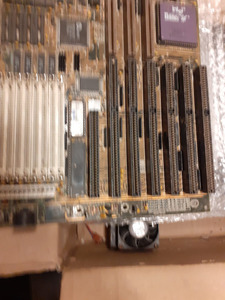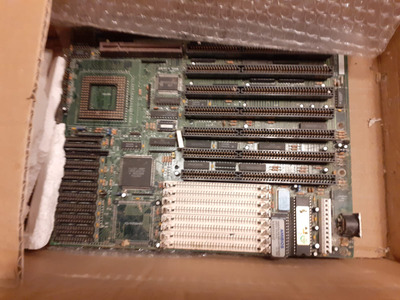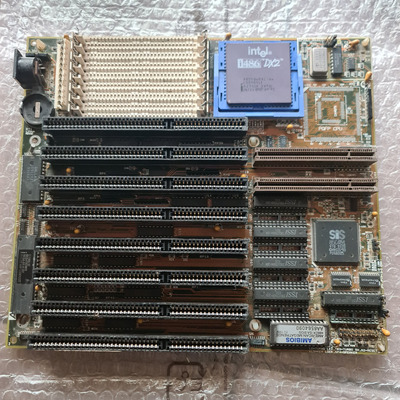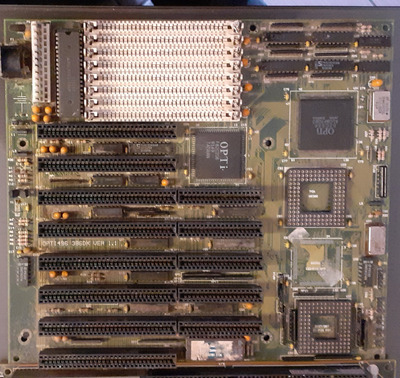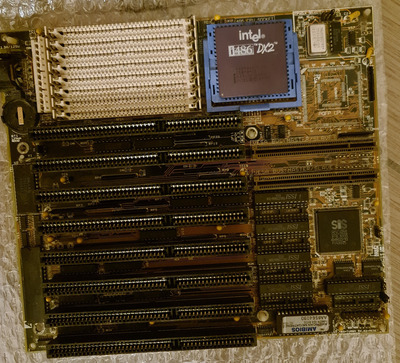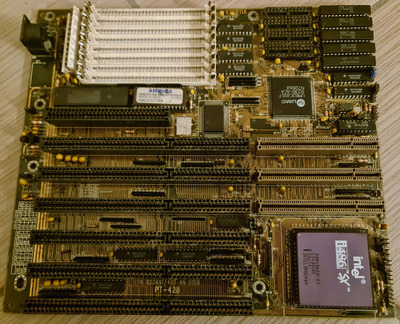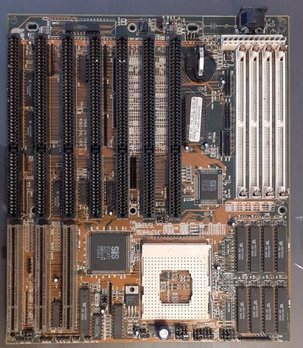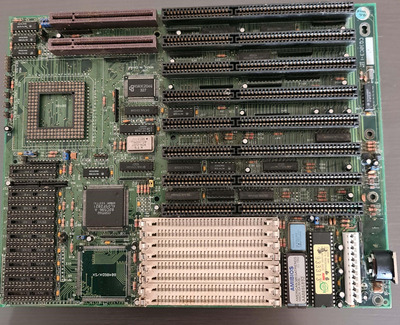Luke4838P wrote on 2023-03-22, 21:28:
[...]
It seems to be a 486 dx with VESA motherboard, the settings on the board say "JPX 25-33-50 cpu clock" so i assume it may only support the first 486dx generation (need help to see if i can place a more powerful cpu on it)
On the contrary, 1st gen would probably have 16 and 20MHz as well.
Consider that this is the external CPU clock - what we later called FSB - and no 486 was specced to run faster than 50MHz - even the fastest So3 CPUs (5x86-133) only ran at 33MHz externally. All that's missing here is 40MHz, but that's a speed not supported by Intel, so it might just be focused on Intel CPUs.
Of course it would need jumpers to support WB cache, 3V/3.45V and other things for later CPUs, but purely the bus speeds aren't an issue.
Is this the AOpen (blue) Socket 2 board with SiS 85C461 chipset? If so it is an old one: no voltage regulator, no support for advanced caching features and the chipset is a hybrid 386/486 one...
I can't find the exact AOpen model number (don't think it's in TheRetroWeb), but the few settings appear excellently documented, so not a huge issue.
